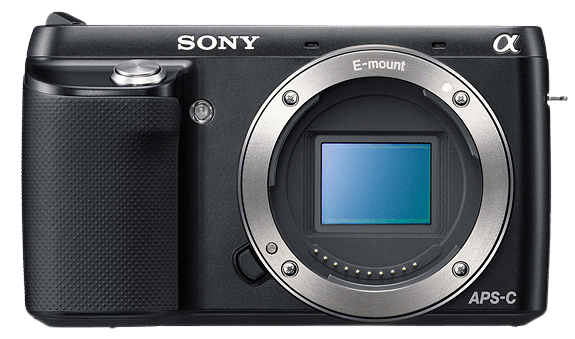Sony NEX-F3 Specs and Scores

The Sony NEX-F3 earns a score of 46/100 for general specifications. Launched in 2012 at a price of $600, this mirrorless camera measures 117 x 67 x 42mm and weighs 314g (0.69lbs). Considering the current market, the NEX-F3’s specifications may not impress photography enthusiasts, as more advanced options are available today. However, for those seeking a lightweight and compact camera, the Sony NEX-F3 could be a suitable choice.
Sony NEX-F3 Overview and Optics
The optics of the Sony NEX-F3 receive a score of 50 out of 100. The camera has 16.1 megapixels, a shooting speed of 5.5, and a CMOS sensor. The Bionz processor enables efficient performance, and the DXOMARK score for the sensor is 73. The sensor size is APS-C, and the lens mount is Sony E. However, the camera does not have image stabilization, and the aspect ratio is 3:2.
Comparing these specifications to today’s market, the Sony NEX-F3 has decent features, but it lacks in some areas. The absence of image stabilization might be a drawback for some users, as it impacts the quality of photos taken in low light or with a shaky hand. Additionally, the shooting speed and megapixels are relatively average for a camera in this category.
The Sony NEX-F3 is a suitable choice for those looking for an affordable camera with satisfactory optics. However, users seeking top-notch image quality and the latest features may want to explore other options in the market.
Sony NEX-F3 Video Performance
The Sony NEX-F3 receives a video score of 34/100. It offers standard HD video resolution with maximum dimensions of 1280 x 720 and a maximum frame rate of 30fps. However, it lacks built-in time-lapse functionality.
In today’s market, the NEX-F3’s video capabilities fall short compared to other cameras. Many contemporary models boast higher resolution, such as Full HD or 4K, and offer more advanced features. The absence of time-lapse functionality is a notable drawback for those who enjoy capturing this type of footage.
The Sony NEX-F3’s video performance leaves much to be desired for users seeking advanced video features and higher resolution. Considering the rapid advancements in camera technology, the NEX-F3’s video capabilities may not satisfy the needs of today’s videographers.
Sony NEX-F3 Features and Benefits
The Sony NEX-F3 scores 41/100 in the features department. The camera has a 3-inch screen with a resolution of 920,000 dots, providing clear and detailed image previews. It lacks a touchscreen, which is a common feature in modern cameras. However, the flip screen compensates for this, offering flexibility in shooting angles.
Unfortunately, the NEX-F3 does not include GPS, Wi-Fi, or Bluetooth capabilities, limiting its connectivity options compared to other cameras in the market. These features are essential for photographers who want to quickly share or transfer images and videos.
When considering the features of the Sony NEX-F3, it is evident that the camera has some shortcomings in terms of connectivity and user interface. Despite this, the flip screen still offers versatility, making it a decent option for those prioritizing flexibility in shooting angles over advanced features.
Sony NEX-F3 Storage and Battery
The Sony NEX-F3’s storage and battery score is 27/100. This camera has one memory card slot that accepts SD, SDHC, SDXC, Memory Stick Pro Duo, and Pro-HG Duo cards. In the current market, having only one memory card slot may not be as competitive as cameras with dual card slots for added storage and backup options.
The NEX-F3’s battery life lasts for 470 shots, using the NP-FW50 battery. This battery life is average compared to other cameras in its category. However, it lacks USB charging capabilities, which limits its convenience for on-the-go users who may want to charge their camera using portable chargers or laptops.
Considering these specifications, the Sony NEX-F3’s storage and battery features are adequate but not outstanding in today’s market.
